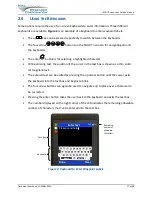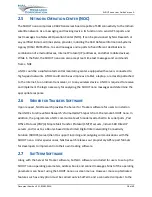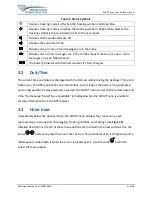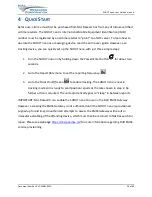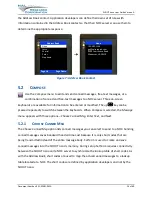
SHOUT nano User Guide Version A
Document Number: 451-92681-001A
12 of 60
1
I
NTRODUCTION
The SHOUT nano is a handheld, global, two-way satellite messaging and personal tracking
device. It utilizes Iridium’s Short Burst Data (SBD) service to provide location information
determined by a Global Positioning System (GPS) receiver, two-way inbound and outbound
status, text messaging, and emergency/alert notifications. The SHOUT nano significantly
improves service reliability over existing tracking products by allowing two-way
communications and confirmation of the nature of the distress to the first responder
community. This reduces false alerts; helps identify the nature of the emergency so that the
correct assets can be deployed, thereby reducing search and rescue costs; and provides
communications feedback capability to the user to assist in rescue efforts. The SHOUT nano is
100% backward compatible with the SHOUT.
The SHOUT nano is designed with ultra-low power consumption electronics drawing less than
35 μA during sleep. With an internal 1.95 Ah rechargeable Li-ion battery and depending on the
environmental conditions, it can send a position report every ten minutes for more than ten
days (more than 1,500 reports). Read
impact of blocked antennas on the number of reports. The SHOUT nano is equipped with a
high-resolution color Liquid-Crystal Display (LCD) and on-screen keyboards, allowing
transmission of free-text, canned messages, and a combination of free-text and canned
messages. The menu options are displayed as icons for quick access. The device can periodically
wake up from sleep to send its position report to a command center. A 911 button is used for
immediate emergency/alert notifications. Data are packaged in either standard or 256-bit
Advanced Encryption Standard (AES) encrypted format.
The SHOUT nano is capable of sending position reports in PECOS Message Structure (PMS). The
PMS complies with the Blue Force Tracking Data Format Specification. The SHOUT nanos are
shipped without PMS features activated and can only be enabled by NAL Research at the
request of an authorized user. Functions related to PMS can be found in

















